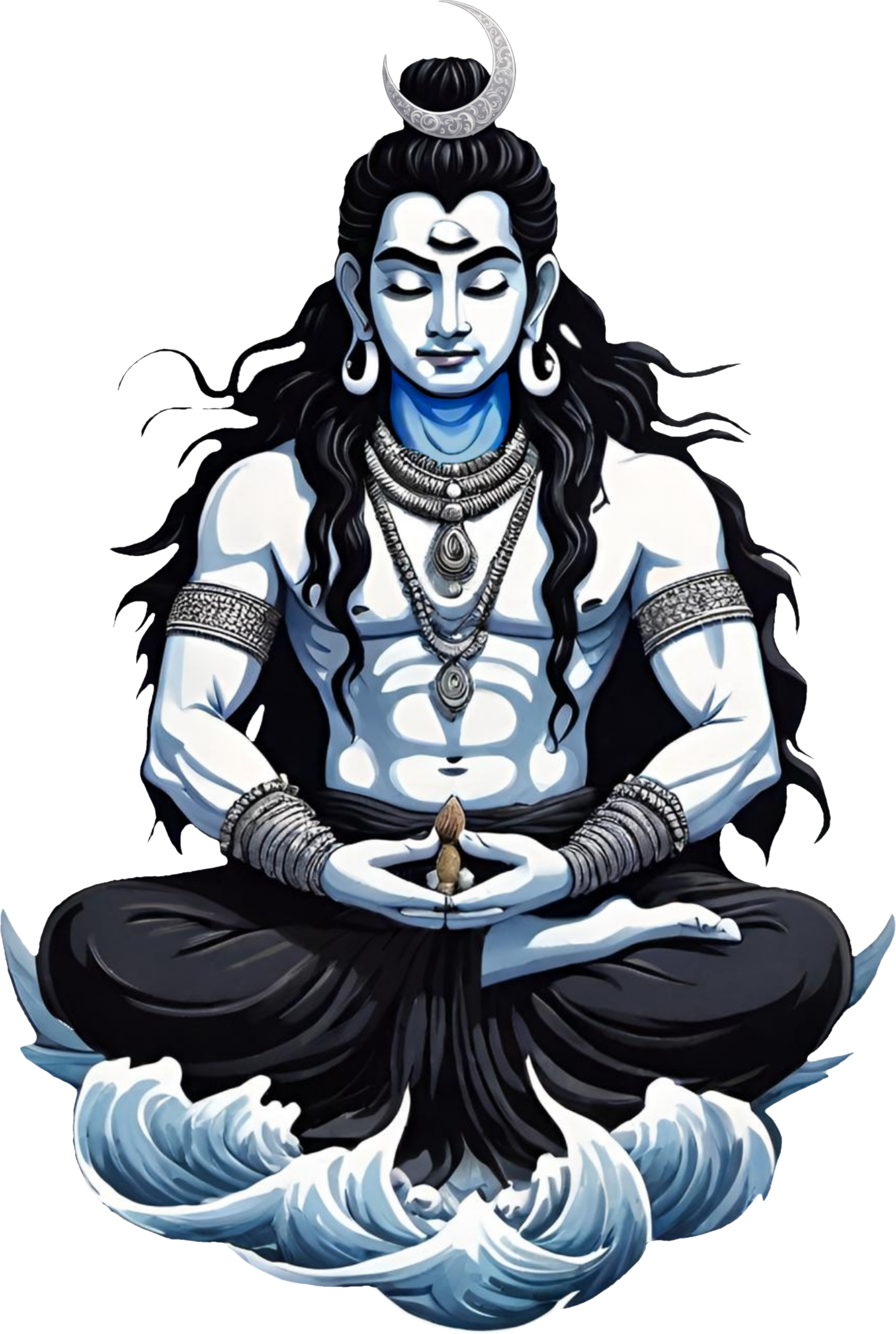Shiva is the god of
destruction and transformation, the facilitator of the cyclical renewal of the universe. But this is not seen as negative destruction rather as a necessary step for rebirth—he dismantles the old to make way for the new! As the final member of the Trimurti, Shiva destroys and transforms creation at the end of each cycle. Both for his destructive power and serene wisdom, Shiva is associated most with
Wylrith, the most revered element in
Bharatavarsa and the
Frozen Wastes! Alternately, some place
Azryth into this role. Either way, Shiva is a paradoxical deity embodying the
duality of existance, representing both creation and destruction, fierceness and innocence, immense passion and serene detachment. Both fearsome and benevolent, Shiva is an all knowing and austere yogi while also being a fierce warrior and slayer of asura.
Shiva is also known as
Adiyogi, the first yogi, making him the
patron of yoga and meditation. He is prone to withdrawing from and denouncing earthly pleasures, descending into ascetic isolation. Breaking his concentration is ill-advised, having once turned
Kamadeva to ash for doing so! It is only his wife
Parvati who can draw him back to the material world, grounding him with the joys of family and home. Parvati is the goddess of power, marriage and devotion, famous for being the ideal mother and wife.
Together, these two represent the balance between masculine and feminine energies as well as between a religious lifestyle and one revolving around family. This family includes two sons,
Ganesha and
Kartikeya, which represent auspiciousness and war. However, Shiva and Parvati have several manifestations which they either transform into or who spring from their bodies like Brahma's
Manasaputras! Shiva's manifestations include
Pashupati and
Rudra.







Comments